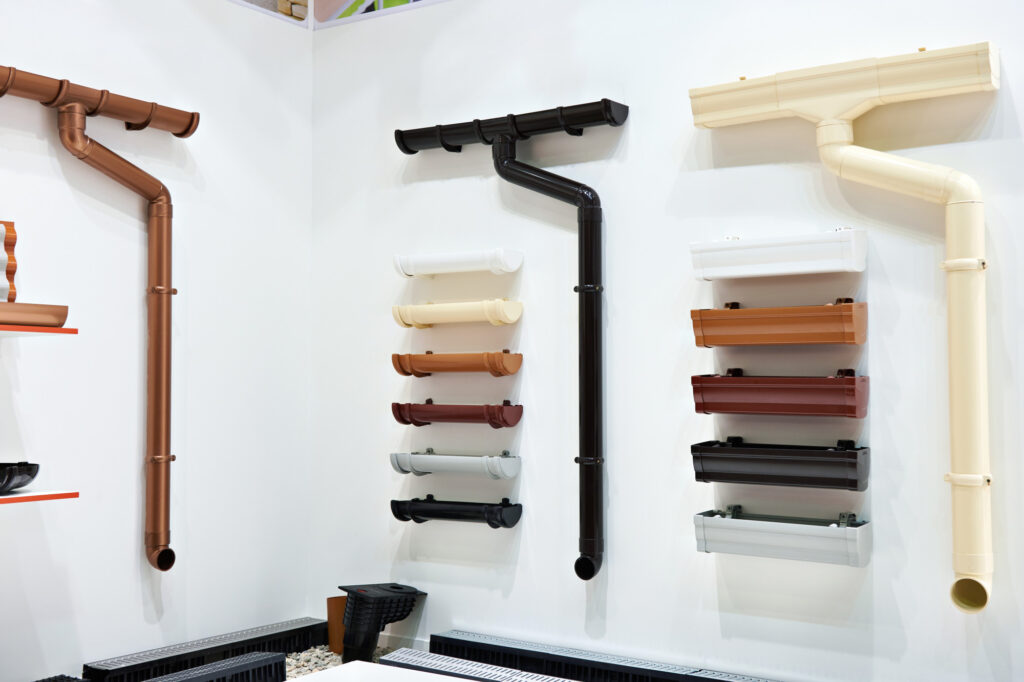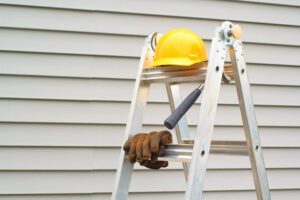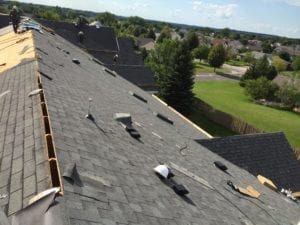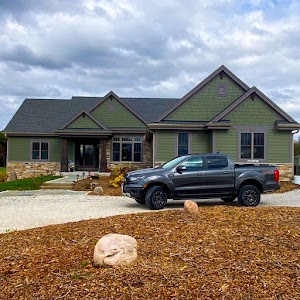When it comes to home renovations, new gutters might be the last thing on your list. It’s no surprise why we prioritize our kitchens and bathrooms—we spend the most time inside our homes, after all.
But, clogged gutters can quickly lead to basement flooding and siding damage. As soon as the storm subsides, you’ll wish you’d reprioritized your renovation list.
Since the average home’s gutter system lasts about 20 years, your gutters might be due for a refresh if you’re not sure how old they are.
The trouble is, there are so many different gutter types on the market that it can feel overwhelming. Luckily, we’ve broken it all down for you. Read on to learn about your gutter options so you can choose the right ones for your home.
Why Is it Important to Pick the Right Gutter Type?
While all gutters protect your home and siding from rain damage, each type has something slightly different to offer. When you’re picking the type of gutters you want, the aesthetics, water capacity, and longevity will factor into your decision.
The right gutter type for your home will depend on what look you’re after. The gutters line the perimeter of your roof, so they’ll impact your home’s design. For example, some gutter designs look better with historical homes while some look better with modern ones.
There’s also the water capacity to consider. Some styles of gutters can handle more water than others and if you choose wrong, you could still end up with water issues. Talk to your contractor to decide which styles can handle the rainfall in your area.
Choosing the right material will ensure that your gutters last as long as you want them too. There’s a range of materials to choose from, so it’s important to choose the one that matches your expectations.
Sectional vs. Seamless Gutters
The first gutter decision you’ll need to make is sectional or seamless. Sectional gutters come in small sections that you fit together. Seamless gutters use long sections that fit together at each corner.
Sectional gutters are a popular DIY option. If you want to go the DIY option, you’ll probably need to choose sectional. Just know that they’re more prone to leaking since they have more seams.
Seamless gutters are more common, but you’ll need to hire a contractor. They’ll use a special machine that will create the right sized gutters for your home and connect them at the corners. They cost a bit more than sectional gutters, but you’ll be better protected against leaks.
Gutter Styles: K-Style, Half-Round, Fascia, and Hooded
One of the biggest decisions you’ll have to make is to choose a gutter style. The design you choose will impact the look of your home and its water capacity. We outline the pros and cons of each style below.
K-Style Gutters
K-style gutters are the most popular type and they’ve been around for at least the last 50 years. They get their name because they resemble the letter K from the side.
These gutters have one flat side, a flat bottom, and a decorative side that faces outwards. From the outside, it looks a bit like crown molding.
Despite their low profile, the 5-inch K-style gutters can handle twice as much rain as 5-inch round gutters. If you’re not sure what style you want, K-style is a great choice. They can handle a lot of water and they won’t distract from your home’s style.
The only trouble is, K-style gutters require rectangular downspouts. They can divert rainwater, but the rectangular downspout shape isn’t as efficient as a round tube. To compensate, you might need to add more downspouts.
Half-Round Gutters
Half-round gutters look like a round tube cut lengthwise. They’re open on the top with the curved edge on the bottom. A curled front lip keeps water inside the trough until it’s diverted to the downspout.
This style isn’t as popular anymore since it has a tendency to overflow. Debris gets stuck in half-round gutters which makes water spill out. This can make water run towards the foundation or splash against the siding.
These gutters are also known as European style, especially when they’re made from copper. That’s because that style of gutter is common in historic European building design.
If you have half-round gutters, you need rounded downspouts. The gutters can easily overflow, but the round downspouts actually drain better than the rectangular K-style downspouts.
Fascia Gutters
Fascia gutters tie the fascia and the gutters into one system. Instead of traditional fascia, these gutters sit on the roof rafters.
This gutter type isn’t as common, but it does protect your siding from extra moisture. Plus, it’s low-profile style looks great with modern homes. It offers clean lines to the perimeter of your roof.
If you have an issue with rotting fascia, this type of gutter can solve that problem and prevent roof repairs. They may cost a bit more, but you’ll actually be replacing two roof components instead of one.
Hooded Gutters
This style of gutter is known by the brand name of Leaf Guard. This unique type of gutter is a covered unit with a slit for water. It’s similar in shape to K-style gutters, but it has a hood that covers the top of the gutter.
The main benefit of this type is that it keeps out debris like leaves and sticks. That means you won’t have to clean your gutters as often. In some cases, you’ll never have to clean them.
Rather than adding a debris filter or a screen to the top of existing gutters, these gutters offer those built-in benefits. The downside to this type is that they’re one of the most expensive gutter options on the market.
Gutter Materials: Pros and Cons of Each Type
Once you’ve chosen your gutter design, the next big decision is the material. Each material below has different lifespans, costs, and benefits.
Aluminum
Aluminum gutters are lightweight, rust-resistant, and can stand up to any climate. Plus, they’re usually a very affordable option. You can also find them in a wide variety of colors, which is why they’re the most popular choice among homeowners.
Their main drawback is that you can dent them easily. To avoid this problem, just be careful where you put the ladder when you clean the gutters. You can also choose a higher grade of aluminum so it’s stronger, but it will cost more.
Vinyl
Vinyl is the cheapest gutter material, plus it will never rust. Like aluminum gutters, these gutters also come in a lot of different colors.
This is also a good gutter option if you’re a passionate DIYer. The sections snap together so you can easily install them yourself. That makes vinyl gutters a great option if you need a gutter solution fast, but you don’t want to spend much money.
The trouble is, since you can snap them together it means there’s more seams. That can lead to leaks over time. Plus, vinyl is susceptible to sun damage and it can crack in cold weather.
Galvanized Steel
Galvanized steel gutters come coated in zinc to prevent rust. Depending on what type of coating you choose, you can expect these types of gutters to last anywhere from 15 to 25 years.
That said, rust can still be a problem. Since the seams for this type of gutter have to be soldered together, installation is also a bit more complicated.
These gutters are very sturdy and strong which means you won’t have to worry about denting. You won’t need to worry about unsightly dents from hail damage or a misplaced ladder.
Copper
Copper gutters never rust, which means they’ll look great forever. Plus, they’ll get a beautiful patina as they’re exposed to the elements over the years. That will add an interesting design feature to your home.
This type of gutter will instantly elevate the style of your home. As it ages it will give your home a sense of character.
The main drawback for this material is that it is a very expensive option. Plus, the seams need to be soldered together so installation is more complicated. But, soldered seams also means they’re less likely to leak.
Popular Accessories for Gutters
If you’re tired of constantly cleaning your gutters, you can solve that problem too. When you get new gutters, you can also include an accessory to make maintenance easier.
A popular solution is to install mesh gutter guards on top of your gutters. This will keep leaves and sticks out of your gutters and downspouts. It also means fewer clogs and less time spent on a ladder cleaning the gutters.
You can also add a wedge of UV-resistant foam to your gutters. This fills the space in the gutter so only water can get through.
Choose the Right Gutter Types for Your Renovation
If you’re planning to upgrade your gutters, you’ll see that there are so many gutter types to choose from. It’s an important decision that will protect your siding, your roof, and your foundation from water damage. Plus, it can also have an effect on your home’s aesthetic look.
Whether you need new gutters, gutter cleaning services, or a new roof, Heins Contracting can help. We have over 20 years of experience serving the Madison, WI area. Contact us today to learn more about our services or get an estimate.







